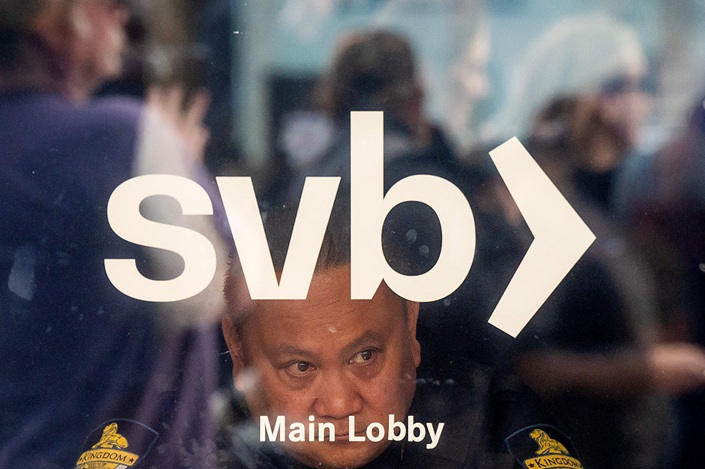
Editor’s note: The unexpected bankruptcy of Silicon Valley Bank (SVB) has sparked extensive discussions among China’s economists and financiers, covering topics such as the lessons China can learn from the incident and its possible ripple effects on the global economy.
An economist said that the U.S.’ response to SVB’s collapse can offer valuable insights to China’s banking industry, while a financier pointed out that it’s not likely that U.S. authorities will shift losses stemming from the resolution of failed banks to other countries.
Below is a roundup of the two experts’ viewpoints.
Li Wei: What China’s financial regulators can learn
The SVB saga reminds me of China’s disposal of the nonperforming assets (NPAs) of its “Big Four” state-owned commercial banks decades ago.
In the 1990s, the “Big Four” — Industrial and Commercial Bank of China Ltd., Agricultural Bank of China Ltd., Bank of China Ltd., and China Construction Bank Corp. — suffered huge losses due to issues such as macroeconomic fluctuations and the lenders’ own poor governance. At the time, official estimates put the share of NPAs in their total assets at 25%, while market participants gave a higher estimate of 45% based on international standards. In either case, such banks would have faced a run and bankruptcy in a market economy.
However, the “Big Four” did not experience either at the time, and the public did not have safety concerns about their deposits in these banks. The main reason for that was they were wholly state-owned enterprises backed by government credit. In other words, as long as the Chinese government was not in trouble, the banks would be safe. While government protection effectively prevented China from running into a financial crisis at the time, it did lead to moral hazard.
Since the 2000s, the “Big Four” have gone public. They are no longer wholly state-owned. If the government were to bail them out again, it would be essentially using taxpayers’ money to rescue the banks’ shareholders and executives, which is not justifiable.
Referring to the U.S.’ handling of the SVB collapse, China could adopt a similar approach when encountering situations like this in the future. It would not only protect depositor interests and reduce financial panic, but also hold a failed bank’s executives and shareholders accountable.
Banks are the core of the financial system, which is in turn the core of the modern economy. Risk and return are two key indicators for assessing financial institutions’ operational capabilities. Neglecting either aspect will reduce their efficiency. In essence, financial institutions are risk management machines that pursue a balance between risk and return. This is not an easy task, but it is an inevitable way for China’s economy to achieve high-quality development. In this regard, SVB’s bankruptcy can offer many important insights to China’s banking industry.
Li Wei is an economics professor at the Cheung Kong Graduate School of Business.
Wang Yongli: Will the U.S.’ emergency measures shift losses overseas?
The U.S.’ full deposit guarantee for SVB and Signature Bank can only be seen as an exception, not a new norm.
This extreme measure has taken into account the actual situation of both banks’ assets and liabilities, particularly the high quality of their assets, which would not generate significant losses if held to maturity. It has also taken into consideration the lenders’ significant impact on tech companies, and their extremely urgent situation. The full deposit guarantee would not lead to severe monetary over-issuance by the Federal Reserve, or cause taxpayers to bear losses associated with the resolution of the banks.
Some in China worry that the U.S. will set a precedent for full protection of depositors, which will lead to massive losses for the authorities that will eventually be either borne by global holders of dollar assets or shifted to other countries.
I believe that the worrisome scenario is not likely to happen, since the Fed has created the bank term funding program, which means that emergency events like the SVB collapse and such response measures will rarely occur.
The program, launched earlier this month, aims to make additional funding available to eligible depository institutions in an effort to help assure banks have the ability to meet the needs of all their depositors.
Wang Yongli is general manager of China International Futures Co. Ltd.
Read more Cover Story: 2008 Redux? SVB Collapse Raises Questions About Banking Oversight
Contact editor Lin Jinbing (jinbinglin@caixin.com)
Get our weekly free Must-Read newsletter.







